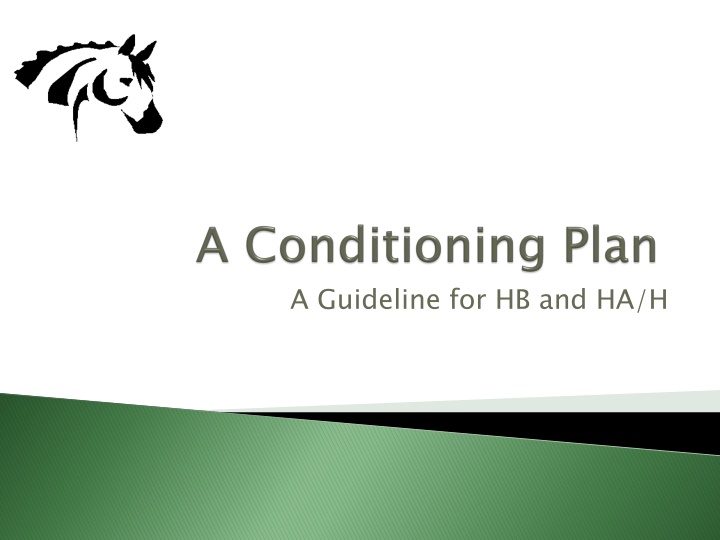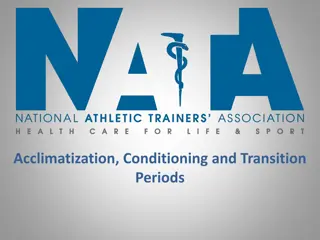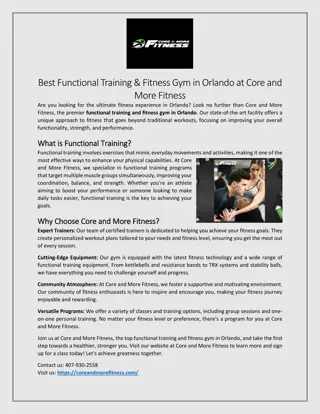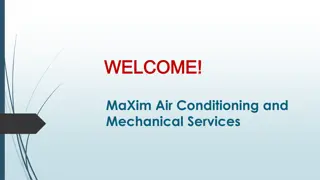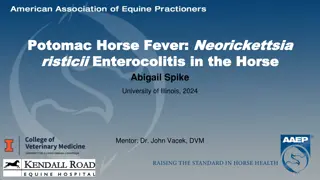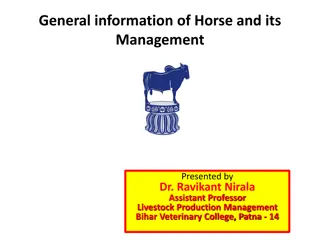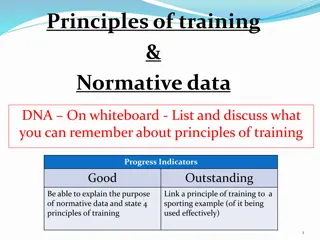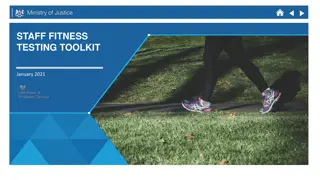Guidelines for Horse Conditioning and Fitness Plan
Conditioning your horse is essential for enhancing performance and reducing the risk of injuries. Learn about proper conditioning, feed schedule adjustments, rider fitness considerations, and more to keep your horse in top shape for competitions.
Download Presentation

Please find below an Image/Link to download the presentation.
The content on the website is provided AS IS for your information and personal use only. It may not be sold, licensed, or shared on other websites without obtaining consent from the author.If you encounter any issues during the download, it is possible that the publisher has removed the file from their server.
You are allowed to download the files provided on this website for personal or commercial use, subject to the condition that they are used lawfully. All files are the property of their respective owners.
The content on the website is provided AS IS for your information and personal use only. It may not be sold, licensed, or shared on other websites without obtaining consent from the author.
E N D
Presentation Transcript
Conditioning is a systematic process in which your horse strengthens their cardio-vascular, respiratory and muscular systems thru periods of work and recovery. When a good conditioning plan is in place it will help your horse by allowing them to perform more efficiently with less chance of injury. Claire Harmon 2009
Did you know mile is 800 meters? 1 mile is 1600 meters. 240 meters per minute (mpm)is a trot 350 mpm is a working canter 400 strong canter working toward gallop When passing another horse, maintain a safe distance, at least one pony length, turn horse s head toward other horse. After work, a fit horse should recover normal breathing in about 5 minutes. Claire Harmon 2009
Make sure to walk your horse until he is completely cooled out. Your stirrups should be at cross country length. Warm up your horse for 15-20 minutes before your begin galloping. Most injuries occur from your horse s: Fatigue Improper conditioning Lack of knowledge about pace Claire Harmon 2009
Rider fitness Age of your horse What is the current level of activity- look at their weight, fitness and attitude Is legging up required Body score Bred- the recovery rate will vary Final goal (date of competition) The terrain needed to condition Claire Harmon 2009
Adjust the feed schedule as program progresses: 1. Increase energy source as they need more energy 2. Mindful of protein levels 3. Adding fat or carbs as they progress 4. Will they need electrolytes? Base line TPR(temperature, pulse, respiration) 1. 2. 3. 4. 5. Temperature is usually between 99-100.5 Pulse rate at rest is normally between 36-44 Respiration at rest is normally between 8-16 Mucous Membrane is pink Capillary refill usually in 2 seconds Claire Harmon 2009
Good grooming-aids in circulation , healthy skin and also tones muscles. The foundations for all phases are effected: Dressage contact, straightness and collection. X X- -country minute) speed with variations in terrain, the fences and the rebalancing will require changes in speed. Stadium quick recovery, time. Dressage- relaxation, tempo, rhythm,throughness, country- ridden at a specific mpm (meters per Stadium- gymnastics, various combinations, agility, Claire Harmon 2009
Long, Slow, Distance It can take 4-6 months to strengthen the density of the bone Usually shorter work outs to strengthen the tendons and ligaments Improves cardio Helps to regulate the body temperature Interval Training The progression of work and rest, speed and duration Several short periods of work are alternated with brief recovery periods Progressive Loading You will add to the workload and then give time for the body to repair and adapt to that specific workload before adding more You will add Strength Training Peaking Your horse is at his/her peak at the specific time of the event Long, Slow, Distance: Interval Training: Progressive Loading: Strength Training Peaking Claire Harmon 2009
Start with a one to three months of LSD You should work up to 45-60 minutes of easy exercise. This work includes walk, trot, and canter. Work up to, for example, 2 twenty minute trot sets. Then begin 2-3 minutes of cantering at 350 mpm followed by the same amount of rest time. Be mindful not to over load the horse, it takes time to build muscle. Overloading will only delay the process because they don t have enough time to recover. LSD. Claire Harmon 2009
Then move on to the interval training. Cardio vascular conditioning comes into play here. There are two kinds of cardio: aerobic (requires O2 in their system) anaerobic (less efficient and produces lactic acid). We want to increase the aerobic exercise early in our training. This is monitored by their heart rate and speed. Anaerobic training comes later, and works on short fast work, turns and sprints, needed for cross country and stadium. Claire Harmon 2009
Keep increasing the cantering times slowly, and match the work with equal rest times. As your horse gets in shape increase speed, again slowly, from 350 to 375 them 400 ect. until you reach gallop. You are ready to move on when the horse can canter three 4 minute canters at 400 with a heart rate of around 150 per minute. Claire Harmon 2009
The heart rate should drop during the rest set. As you continue start adding 2 minute gallops, 4 minute trots, 2 minute gallop, rest. Work up to 2 sets 3 times per week. . Claire Harmon 2009
You then begin progressive loading adding more time to the gallops. You also add time to the rest so your horse is able to recover. In time you can add some strength training, up hills to build muscle. Pulse rate is normally 36-44 at rest, and should stay between 100-150 per minute. Respiration is normally 10-16 at rest, at work it should not go over 100 per minute. Claire Harmon 2009
About 2-3 weeks before the event you would increase the intensity of the sets (sprints) while decreasing the galloping. This will max the aerobic capacity of your horse. Real strenuous workouts end by 5-10 days out. During the last days before competition make sure your horse is hydrated. This time will also allow for muscle repair and any lactic acid to be flushed from the body. Electrolytes in the morning will be helpful in replenishing sodium water retention. They should be ready for your event. Claire Harmon 2009
Conditioning schedules vary for every horse and I was giving a broad basic example, obviously you would be flexible to adhere to your specific mount.. Blood work and lameness exams should be a part of the program to evaluate the horse s overall condition. Time in the saddle is not the same as a conscientious conditioning plan. Be flexible with your schedule. False readings in TPR may occur. That is why it is important to establish a consistent plan. Claire Harmon 2009
Present, discuss and evaluate a conditioning schedule of 8 weeks preparing a horse for a stated activity or competition (Pony Club or otherwise). In addition, you may present your record of daily riding. Claire Harmon 2009
A conditioning book will be presented to candidate to show an understanding of keeping records and finding information. . Claire Harmon 2009
Sun. Describe Work: Time TPR Rest, ect Sun. Mon. Mon. Tues. Tues. Wens. Wens. Thurs. Thurs. Fri. Fri. Sun. Sun. Claire Harmon 2009
Date Date Work Plan Work Plan Work Diary Work Diary Work Time Work Time Work Level Work Level Recovery Time Recovery Time Evaluation Evaluation Feed change Feed change Lameness issues Lameness issues Though ts ts Though Claire Harmon 2009
1. Elizabeth Gatterdam, National Examiner 2. Equus Magazine 3. Conditioning Sport Horses: Dr. Hilary Clayton 4. Cavaletti The schooling of Hourse and Rider over Ground Poles , Ingrid & Reiner Klimke Claire Harmon 2009
